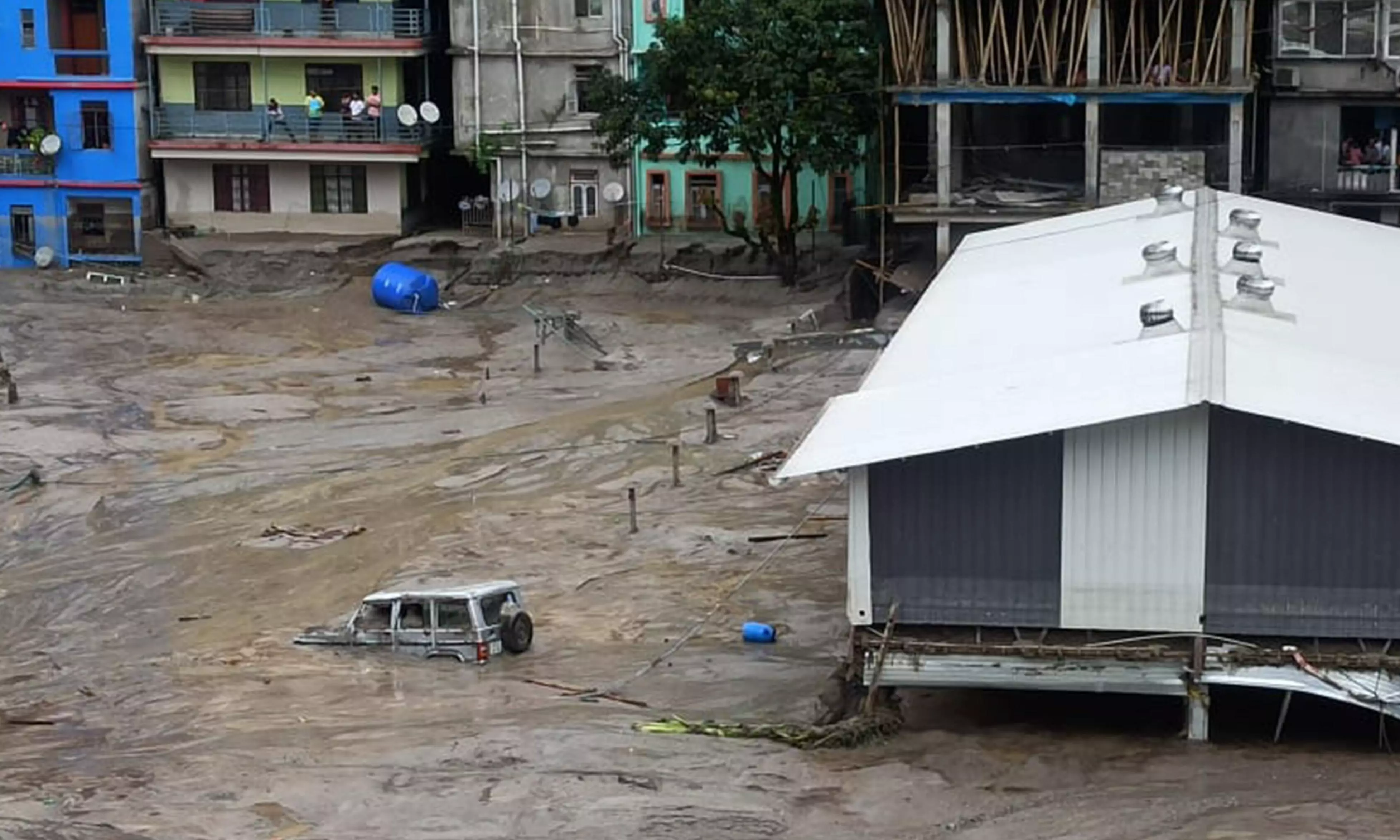
What is GLOF, the phenomenon that triggered Sikkim flash floods?
Glacial Lake Outburst Flood happens when an enormous volume of water is suddenly released from a glacial lake

At least 14 people have died and 102 others including 22 army personnel are missing after a cloudburst in South Lhonak Lake in North Sikkim, triggered a flash flood in the Teesta river basin in the intervening night of October 3 and 4.
The event also resulted in the breach of the Chungthang dam, the largest hydropower project in Sikkim.
Scientists are calling the phenomenon as Glacial Lake Outburst Flood (GLOF), which happens when an enormous volume of water is suddenly released from a glacial lake.
What is GLOF?
GLOFs occur when lakes, formed by melting glaciers, like the South Lhonak Lake, suddenly burst open. Reports say around 105 hectares of water was suddenly released from South Lhonak Lake as a result of GLOF, causing a flash floods in the downstream areas.
Glacial lakes are mostly dammed by ice and glacial sediments made of loose rock and debris and grow dangerous as more water accumulates in them. A breach in the dam would make water cascade downstream, causing flash floods there.
What causes GLOFs?
A variety of reasons can cause GLOFs. The fast melting of glaciers due to rising global temperatures and heavy rains may result in accumulation of too much water in the glacial lakes. The water breaks free if its quantity is more than that the dam can hold or if the dam gives way after weakening.
A breach in the dam of glacial lakes can be triggered by earthquakes, landslides and ice avalanches too. It is being speculated that the Nepal earthquake of 6.2 magnitude which occurred a day before the Sikkim tragedy may have triggered the breach in Lhonak Lake.
Once the water breaks out of the dam, it gushes downstream with an accelerated force, carrying along rocks, debris and sediments which have the potential to raze entire human habitations to the ground.
2021 study predicted tragedy
A 2021 study by an international team of researchers had warned that the South Lhonak lake in Sikkim may burst in the future and significantly impact the downstream region. The study said that the lake has been witnessing a significant growth in the past decades due to glacial retreat, thereby increasing its chances of GLOF. The Lhonak glacier that feeds the lake receded about 2 km in 46 years from 1962 to 2008. It further retreated by about 400 metres from 2008 to 2019.
Even though Sikkim has 733 glacial lakes, with 288 located above an altitude of 5,000 m, the South Lhonak Lake, situated at an elevation of 5,200 m (17,100 ft) above sea level, is one of the largest and the fastest-growing of them.
The team of scientists modelled six avalanche scenarios of varying magnitudes to evaluate the impact-wave generated in the lake and overtopping flow at the dam. They found that avalanche simulations indicated that the frontal moraine or accumulation of ice debris was susceptible to overtopping.
“Our results show that the GLOF susceptibility will increase due to the expansion of the lake towards steep slopes, which are considered potential starting zones of avalanches," the study had noted.
"These avalanches can create an impulse-wave when hitting the lake and are considered the most likely GLOF trigger for the South Lhonak Lake," it said.

